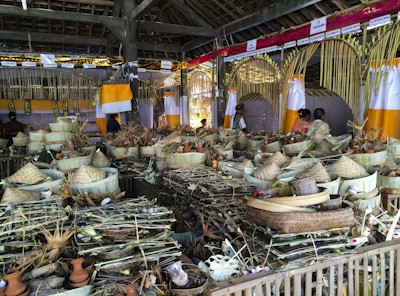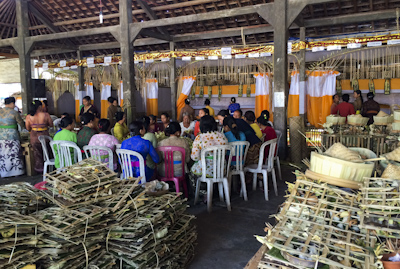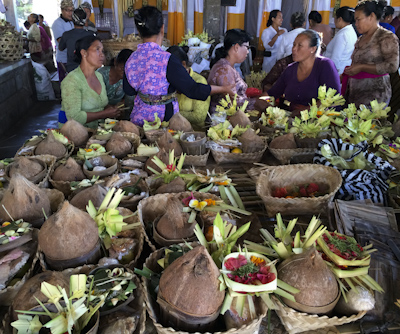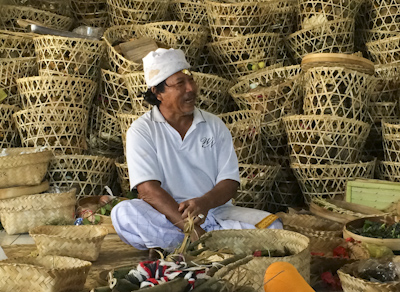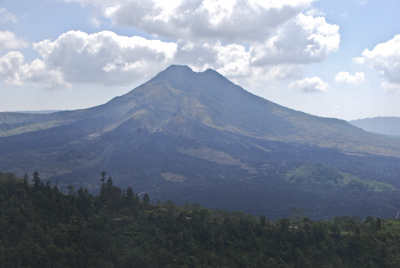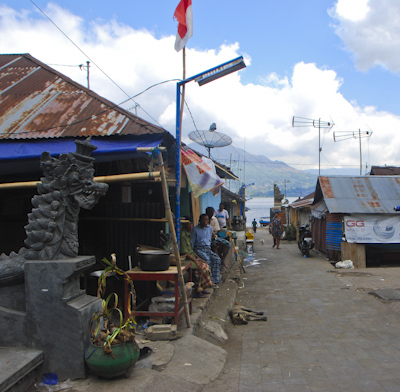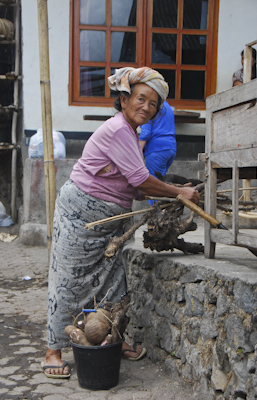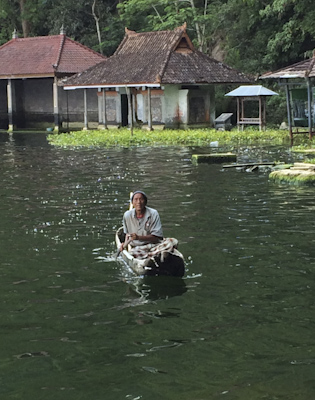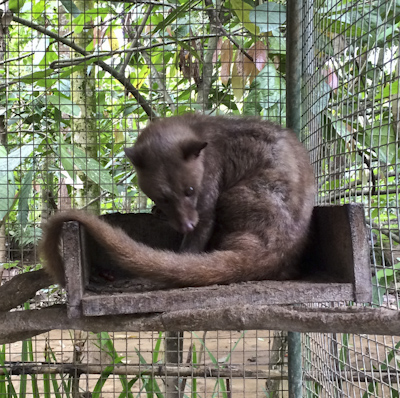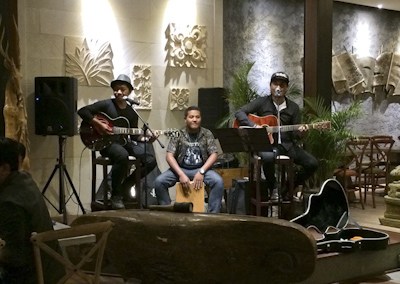Saturday August 22, 2015
Here is a view from my hotel window of a rice field this morning:
Along the road to a remote village in the mountainous interior of Bali our tour leader, Jumena, saw flags flying and asked the bus driver to stop. Jumena said the people were preparing for a “mass cremation ceremony.” He got off the bus to ask permission to bring tourists into the compound to see the preparations.
Villagers bury dead relatives for a period of time then exhume the bodies and cremate all the bodies in a mass ceremony. This one was for forty-two people who had died during the last two years. Cremations are very expensive so mass ceremonies are more practical because the costs are shared among villagers. Family members, friends, and neighbors gather to make preparations.
We walked into the compound and looked into a large open-air covered area. More than fifty women were gathered in separate groups making ornaments or preparing offerings or weaving small palm baskets. Woven palm cubicles lined two walls with the names of the deceased. Inside were empty mats and offerings of food and flowers.
Several men were together in a separate area along with the Hindu priest of the village.
Outside, men were building scaffolding and other wooden objects. Then we crossed the road to see more men building gigantic ‘coffins’ which were built in the shape of horses and bulls and would be burned during the ceremony. What an incredible experience to see the preparations!
Afterwards, we continued into the mountainous regions of northern Bali. The small village of Trunyan is squeezed between Lake Batur and the steep sides of the crater rim of the volcano known as Mount Batur. The village is only accessible by boat.
The drive took almost two hours along mountainous twisting roads to reach the Kintamani region near the active volcano. We continued to the lake and boarded narrow steel boats which took us across to isolated Trunyan Village.

The villagers are descendants of the original Balinese people who predate the arrival of Hinduism in the 16th century. Approximately 250 people live in the tiny village.
The villagers generally don’t welcome outsiders, however, with prior arrangements access is possible since visitors provide their only source of income. We were shown around by one of the village leaders. The people we passed were friendly and greeted our group. An older woman even invited me to have tea with her.
After we walked around the village, we boarded the boats again and rode a short distance from the village to their unusual cemetery. Trunyan villagers do not bury or cremate their dead. Instead they lay the bodies in bamboo cages under the taru menyan tree. The tree is a type of sandlewood and the bodies do not produce a bad smell because of the perfumed scents of the huge tree growing nearby.
The site wasn’t gruesome. A dozen cages were in a row under the tree and family offerings littered the ground. The offerings included everything needed in the afterlife: clothes, dishes, soap, food, water, utensils, coins, personal effects, etc.
We left the Trunyan villagers’ cemetery and drove back toward a tourist area of restaurants and shops. We were restored by a Chinese/Balinese buffet luncheon in a restaurant high on a hill overlooking Mount Batur.
After lunch, we were driven to a specialized coffee plantation where Balinese Luwak Coffee is produced. Arabica coffee plants are grown on the mountainous slopes of this region. Luwak Coffee is produced from the partially digested and defecated coffee cherries by the Asian palm civet, a small mammal which resembles the otter or mongoose. Arabica coffee cherries are pictured below:
The woman in the photo below was roasting coffee beans as the young woman in the foreground was pounding coffee beans to a coarse consistency. Luwak is made by adding a teaspoon of it to boiling water, similar to ‘instant coffee’.
The plantation claimed that their civets were wild but kept several in large cages for tourists to see what they looked like. They offered us small cups of Luwak and other teas and flavored coffees. I have to admit I tried it but prefer other types.
It was another long twisting road back to Ubud and I watched the small villages, tropical forests, and rice fields pass by outside my coach window like the scenery in a movie.
Later in the evening, I went down to the restaurant in the lobby of the hotel to have a taste of home: gelato. A trio of young musicians were playing modern Indonesian music. They were quite good, so I listened for a while and enjoyed my tasty cool gelato and then went to bed. It had been a long but interesting day!

